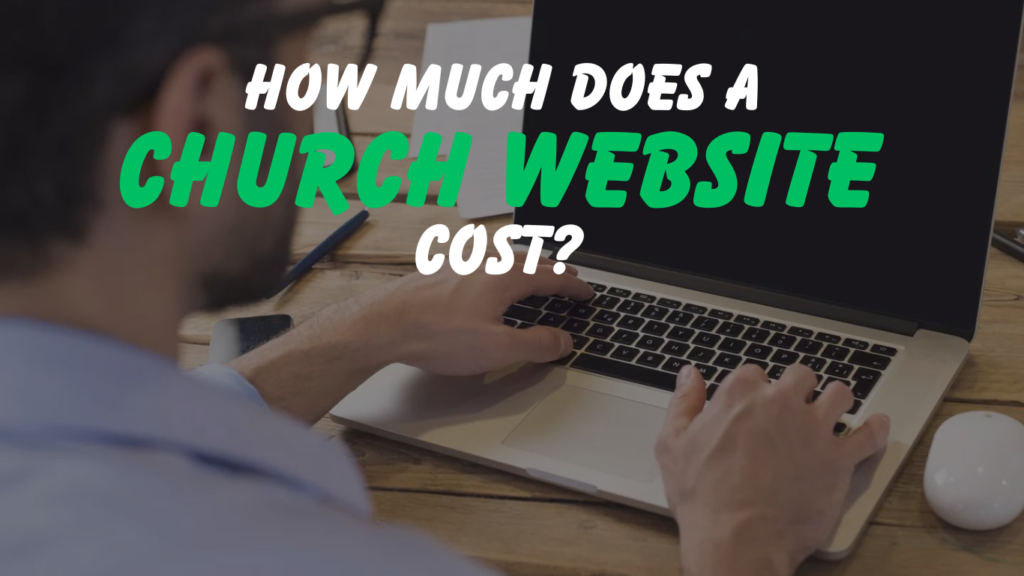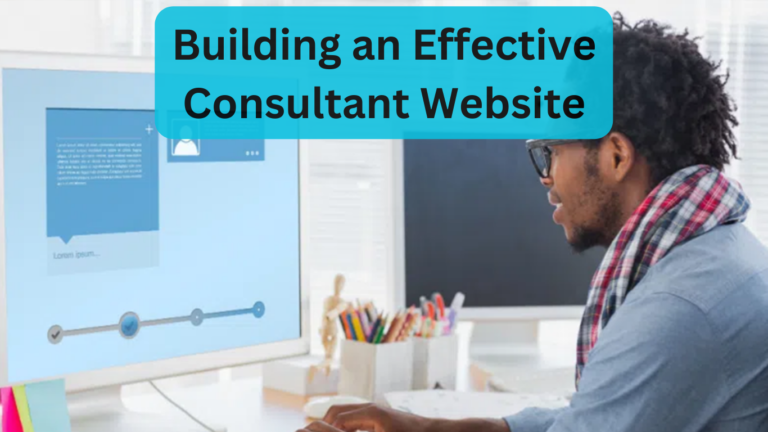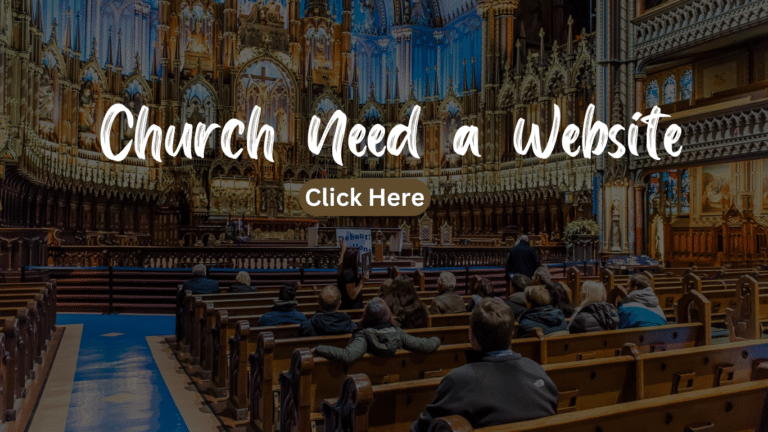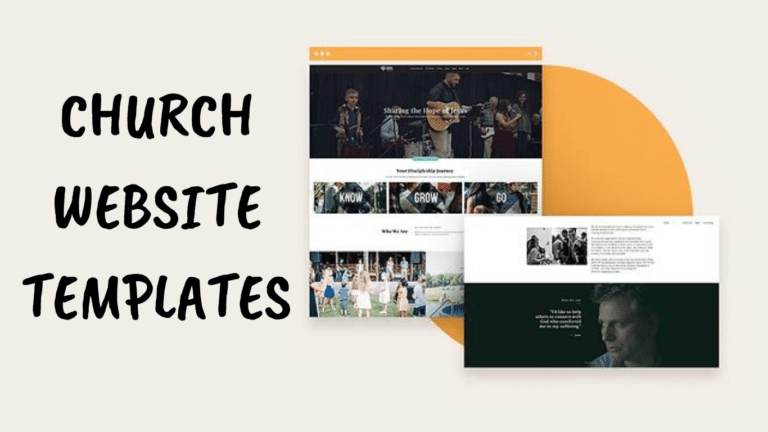Church Website Costs and Effective Strategies
A church website is an essential tool for reaching your congregation and community in the digital age. However, developing and maintaining a website requires time, skill and money. The costs can vary greatly depending on the features, design and ongoing maintenance needs of the site. Here is an overview of the major factors that impact church website costs and some tips for getting the most value from your investment.

Key Factors That Impact Church Website Costs
Design and Development
The initial build of the website, including the design, layout, features and integration, is typically the largest upfront cost. Basic websites can range from $500 – $2,000. More robust sites with custom designs, features like online giving, event management and member logins can run $5,000 – $15,000 or more. Ongoing maintenance and hosting fees will also need to be budgeted for.
Number of Pages
The number of pages and amount of content impact development time. A simple brochure site may only need 5-10 pages. A fully built out site could have 100+ pages for things like individual staff profiles, events, sermons, ministries, etc. More pages equals more time and cost for development.
Features and Functionality
Common features like photo galleries, staff profiles, events calendars, sermon archives and online giving require custom development work. The more advanced interactivity, forms, databases and security needed, the more development time will be involved. Mobile responsiveness is also a must-have feature that will influence cost.
Custom Design vs Templates
A completely custom designed site with branding elements like logo, fonts, colors and navigation optimized for your church will have a higher cost than using pre-built templates. Most churches benefit from some degree of customization.
Content Management System
Using a content management system (CMS) allows non-technical users to update content without coding knowledge. Popular CMS options include Kleap, WordPress and Joomla. There are costs involved with customizing the platform, adding functionality and ongoing management.
Media Integration
Integrating rich media like videos, audio files and live streaming into your site requires additional development and hosting expenditures. Media storage and streaming eat up more hosting bandwidth and resources.
SEO Features
Having a site optimized for search engine discoverability (SEO) through elements like metadata, tags, alt text, site architecture and URL structure is essential. SEO-specific development should be included upfront rather than after the fact.
Maintenance and Hosting
Factor in ongoing costs for site maintenance, backups, security and hosting fees. Managing a custom CMS requires technical oversight. Plan for allocating staff time or outsourcing technical support. Budget $100 – $300 per month for managed hosting fees based on traffic levels.
Cost Ranges
With all of these factors in play, here are some typical overall cost ranges for church websites:
- Basic brochure site – $500 – $2,000
- Custom designed CMS-driven site – $3,000 – $15,000
- Enterprise-level site – $15,000 – $50,000+
Of course, costs can go even higher if integrating very advanced features like member portals, donations, ecommerce, church management system integrations, etc. The key is matching the website capabilities to the needs and budget of your church. A good provider can offer solutions scalable to any budget.
Tips for Getting the Most Value
Here are some tips to help maximize the value from your church website investment:
Have Clear Goals
Define 4-5 key goals and priorities for your site like outreach, attendance, donations, etc. Let these guide the features and design. Stay focused on must-haves rather than “nice-to-haves.”
Do Your Research
Talk to 2-3 providers to evaluate options and pricing. Look at demos and sample sites for inspiration. Check their expertise in church website development specifically.
Involve Key Stakeholders
Include leaders from IT, communications, ministry teams and management to give input on needs assessment and provide content. Make sure to have buy-in from decision makers.
Plan for Phases
It may make sense to roll out a new site in phases. Start with essentials like design, core pages and integration. Add other features over time as budget allows.
Focus on User Experience
Optimize site navigation, layouts and calls-to-action for easy user experience. Follow web design best practices. Conduct usability testing with church members.
Make It Mobile Friendly
With mobile use rising, responsive design that adapts to phones and tablets is a must. Audit for mobile-readiness. Minimize steps to take actions.
Promote the Site
Launch the new site with a promotion plan including social media, email, signage and announcements. Make sure the congregation knows to start using it. Track usage metrics.
Plan for Maintenance
Budget for ongoing hosting, backups, updating content, monitoring performance and periodic redesign. Websites require care and feeding.
Stay On Budget
Be realistic about the costs involved for features needed. Define requirements upfront with providers to avoid cost creep from scope changes. Have a process for approvals.
Church Website Tips
A church’s website is one of the most important tools for engaging with your congregation and community. With more people turning to the internet to find local organizations, the church website provides visibility and delivers information to current and prospective members. Here are some tips for an effective church website:
Design and Branding
The look and feel of your site should align with your church’s visual identity and reinforce your brand. Include your church name, logo, colors, fonts and imagery consistently throughout. A custom designed site has more impact than generic templates.
Easy Navigation
Make sure users can find important pages and take key actions easily. Use clear navigation menus, visual hierarchy, breadcrumbs and sitemaps. Group related content. Remove clutter. Test with users. Mobile navigation must be intuitive.
Relevant Content
Keep content focused on user needs – sermons, events, ministries, beliefs, staff bios, location, contact info. Refresh content regularly. Use relevant images, videos and multimedia. Have calls-to-action to get involved.
Responsive Design
With mobile device usage rising, a responsive design that adapts to desktops, tablets and smartphones is a must. Use flexible layouts, buttons and forms. Check sites on all devices. Mobile speed is also important.
Key Features
Important features may include sermons, giving, event management, member logins, social media integration, volunteer signups, contact forms and search. Allow users to take desired actions easily.
SEO Best Practices
Optimize pages and content for search engines using keywords, metadata, alt text, tags and sitemaps. On-page text and URLs should include target phrases. Check SEO regularly.
Value Statement
Articulate your church’s mission, vision and core values prominently. Help visitors understand who you are and what sets your church apart. Share beliefs, history and community impact.
Keep It Current
Stale, outdated content will turn visitors away. Keep info like staff, events, sermons and ministries updated. Have a content workflow and CMS that makes regular updates easy.
Calls to Action
Every page should have clear calls to action based on purpose – attend service, give donation, read sermon, contact church, etc. Make it easy for visitors to take next steps.
Stay On Brand
Beyond visual identity, check that messaging and voice align with your church’s personality across pages – warm and welcoming, traditional, contemporary, etc. Images and text should feel cohesive.
Easy to Share
Add share buttons for social media to allow visitors to spread the word about your church. Share links, events, sermons and content consistently online.
Ongoing Optimization
Monitor user behavior and website analytics regularly. Look for opportunities to improve navigation, conversions, speed and SEO. Maintain and refresh site over time. Set goals and act on metrics.
Investing in a well-designed church website with engaging content, intuitive navigation and the right features will help your church connect with people online and drive participation, growth and giving. Follow these tips for getting the most from your site.
Frequently Asked Question
How much does it cost to build a church website?
The cost of building a church website can vary widely depending on factors such as features, design complexity, and the web development team you choose. A basic website can start at a few hundred dollars, while more complex sites may cost several thousand dollars.
Are there ongoing costs for maintaining a church website?
Yes, there are ongoing costs for domain registration, hosting, and potential updates and maintenance. These costs can vary but are typically manageable.
Do I need to hire a professional web developer for a church website?
While it’s possible to create a website yourself using website builders or templates, many churches opt to hire a professional web developer to ensure a polished and functional site. The choice depends on your specific needs and technical expertise.
Are there any free options for building a church website?
Yes, there are free website builders and content management systems (CMS) like WordPress that offer free themes and plugins. However, you may still incur costs for domain registration and premium features.
What features can impact the cost of a church website?
Features such as online donation integration, event calendars, video streaming, and member directories can increase the cost of a church website. The more complex the features, the higher the cost.
Can I update the content of my church website myself?
Most modern church websites are designed to be user-friendly, allowing administrators to update content easily. Your web developer can provide training on how to make updates.
Tips for Church Websites:
- Choose a mobile-responsive design: Ensure your website is accessible and looks good on mobile devices, as many people use smartphones to access information.
- Highlight essential information: Display your church’s location, service times, and contact information prominently on the homepage for easy access.
- Regularly update content: Keep the website current with the latest events, sermons, and news to engage visitors and encourage repeat visits.
- Incorporate multimedia: Share sermons, videos, and images to provide a rich online experience for your congregation and online visitors.
- Prioritize security: Protect your website from cyber threats by using security plugins and keeping software up to date.
- Integrate online giving: Make it easy for members to donate online by integrating a secure donation platform into your website.
- Utilize social media: Connect your website to your church’s social media profiles to engage with your community and share updates.
- Create a welcoming atmosphere: Use warm and inviting visuals and language to make online visitors feel welcome and encourage them to visit in person.
- Optimize for search engines (SEO): Implement basic SEO practices to improve your website’s visibility on search engines like Google.
- Provide resources: Offer resources like sermons, articles, and educational materials to help members grow in their faith.
Conclusion
Developing a custom church website typically costs between $3,000 – $15,000 depending on the features and functionality needed. With some diligence on requirements, provider research, phasing and budgeting, churches can secure professional quality websites tailored for their unique needs and outreach goals. The investment pays dividends through increased engagement, community exposure and delivering mission-critical information to your congregation.
















